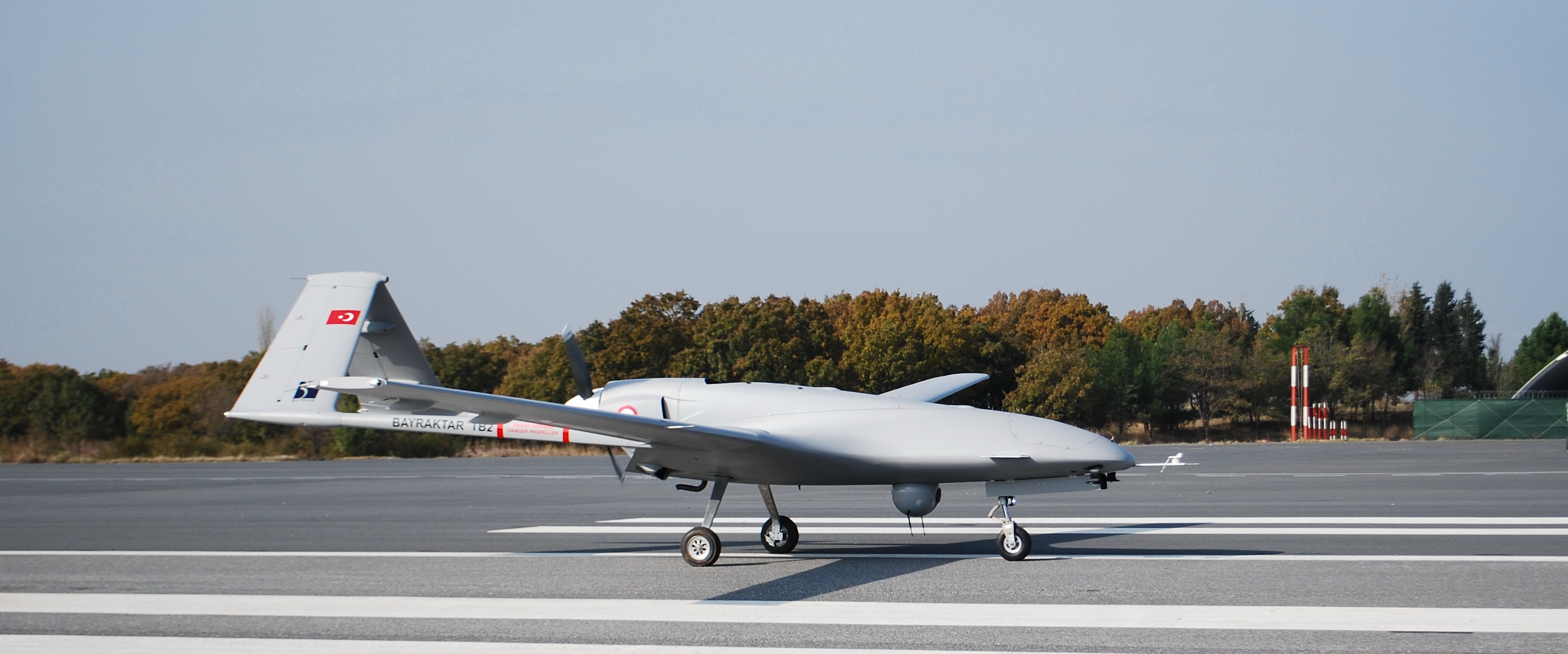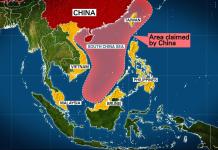The US, Russia and China are in a race to be the next drone superpower besides few other nations including Israel and Turkey. They are investing large sums in developing unmanned vehicles — be it ships, tanks, subs or UAVs.
At the same time, these three countries face stiff competition from two other major players in drone technologies — Israel and Turkey.
A new book highlights the emergence of a new world order with the advancement of drone technologies. It is said that drone swarms, in fact, may alter the face of war in the future.
In his book, Drone Wars: Pioneers, Killing Machines, Artificial Intelligence, and the Battle for the Future, author Seth J. Frantzman points out that the drone capabilities of nations may decide who gets the upper hand in a conflict.

In an excerpt, the author quoted former CIA director David Petraeus as saying that drones, “unmanned ships, tanks, subs, robots, computers and every additional conceivable system are also going to transform how we fight all campaigns. Over time, the man in the loop may be developing the algorithm, not the operation of the unmanned system itself’.
The book highlights the countries making their attempts to advance drone technology. Many new ideas are gaining ground as the US seeks to compete with China and Russia, and developing more diverse choices than the Predator and Global Hawk.
The US
Frantzman notes the futuristic ideas conceived by the US. In March 2019, the XQ-58A Valkyrie was introduced. It was expected to breach the air defenses of the enemy. Designed by the Air Force Research Laboratory in Ohio, the drone was expected to be a low-cost one.
Another futuristic drone set to take to the skies is Skyborg. It is expected to be ready by 2023, and according to Acquisition director, Will Roper, “it would take off, land by itself and fly in all weather conditions”.
The Defence Advanced Research Projects Agency (DAPRA) of the US Department of Defense also came up with a futuristic idea — the Squad X. The idea is to create small drones equipped with artificial intelligence. These small drones called the Black Hornets will be able to fly for 25 minutes.
China is emerging as a formidable adversary for the US. To counter the Chinese aggression in the South China Sea, the US had deployed the MQ-9B in September. The Indian Ministry of Defence (MOD) also decided to acquire 30 such drones at an estimated cost of $3 billion.
The American MQ-9B has a 40-hour endurance with a maximum altitude of 40,000 feet. Its payload capacity, including air to surface missile and laser-guided bombs, is up to 2.5 tons.
The MQ-9B Sea Guardian can undertake over-the horizon-long endurance missions. It is also capable of completing intelligence gathering and surveillance missions. It can also conduct anti-surface warfare (ASuW), anti-submarine warfare (ASW), search and rescue (SAR), humanitarian assistance and disaster relief (HADR), border surveillance and law enforcement.
The US has established a permanent military base in Romania to operate MQ-9 Reaper (Predator B), with the aim of getting intelligence reports for NATO operations.
China
China’s SZ DJI Technology Co., the largest drone manufacturer in the world, introduced the Phantom I in 2013. It further introduced the compact, portable drone- The Mavic in 2016. By 2017, it took over around 72 percent of the global markets for commercial drones.
One of the most potent drones in the world, the Wing Loong II, has been developed by the Chengdu Aircraft Design and Research Institute (CADI), a division of the Aviation Industry Corporation of China (AVIC). It is designed to aid the Chinese surveillance and aerial reconnaissance abilities.
According to reports, Wing Loong II is a medium-altitude long-endurance (MALE) UAV. It is 9.05m long, has a wingspan of 14m, and its height is 2.77 m. The drone’s expected take-off weight is 1,100 kg and it can carry additional loads of 200 kg on external stores. The drone has also been acquired by China’s close ally Pakistan.
China’s PLA is known to be using the GJ-2, the strike model of which is an 11-meter-long medium-altitude long-endurance (MALE) with a payload of 480kg. It can carry up to 12 missiles or bombs, has a top speed of 380km/h, a cruising speed of 200km/h and a service ceiling of 9,000 meters.
The PLA also possesses CH-4, which was tested in the Tibetan plateau region in 2018, and the BZK-005C – specifically modified for use at high altitudes.
In April this year, China announced the completion of its new stealth drone Feilong 2, claiming it could rival the US Air Force’s B-21 stealth bomber.
The Feilong-2 or Flying Dragon 2 could also be used with a swarm of drones to carry out reconnaissance and surveillance, a saturation attack, or damage assessment, according to The EurAsian Times.
The developer, Zhongtian Feilong Intelligent Technology, claimed the Feilong-2 has similar speed, attacking range, payload, and stealth capabilities as the Northrop Grumman’s B-21 Raider, which is expected to take its maiden flight by July next year.
China is also focused on developing unmanned submarines. The PLA Navy has several AI-enabled vessels — in service and under construction — as it wants to counter the US dominance in the Indo-Pacific region and beyond, experts said.
Russia
The Sukhoi S-70 Okhotnik (Hunter) heavy strike drone is one of the Russian military’s prized possessions. In 2019, Okhotnik had flown with a Su-57 fifth-generation fighter jet, wherein the drone maneuvered in the air at an altitude of around 1,600 meters, with the flight lasting for over 30 minutes.
According to sources, the drone could be used to distract the defenses and perform reconnaissance to locate, identify, and track targets for the Tu-95 bomber.
The Okhotnik weighs 20 tons and can reach a near-supersonic speed of 1,000 km/hour while carrying its payload internally.
Russia also successfully test-flew Zala, a spy drone, in April. The Zala is produced by an Izhevsk-based company, called the Zala Aero. Reports suggest that these are the only drones Russian drones that can fly in the harsh weather of North and South Poles.
Nikita Khamitov, the special projects head of Zala Aero was quoted as saying, “We have operators: female scientists in the Antarctic. They are using the Zala 421-08 small unmanned aerial vehicle”.
It is a small, portable, hand-launched drone, and can be put to multiple uses, such as frontline reconnaissance, overground and over-sea surveillance. It can also be used by special forces to locate enemy positions thereby avoiding ambushes.
Earlier this year, Russia released a video, in which the Orion unmanned aerial vehicle (UAV) was shown dropping weapons in a field trial in Syria.
I believe this is the first footage of Orion UCAVs in Syria. This Orion reportedly conducted 38 sorties in Syria, including (by my count) 19 air strikes and 18 reconnaissance flights. 5/https://t.co/fKX2ujxVSG pic.twitter.com/aixkX0ag6U
— Rob Lee (@RALee85) February 21, 2021
The Orion is an unmanned combat aerial vehicle (UCAV) with an effective aerodynamic design. Developed by Kronstadt Group, Orion has a maximum take-off weight of 1 ton and its maximum payload strength is 200 kg. with a standard payload it can fly up to the speed of 200 kmph.
The Orion holds an important place in Russia’s plans to compete with other advanced drone-making countries like the US, UK, Israel and Turkey.
Another significant progress Russia has made is in the domain of unmanned robotic vehicles. Russia’s latest ‘Udar’ tank will have the capability of moving autonomously on the battlefield and interact with drones. It has a remotely-controlled turret, DUBM-30 Epoch, armed with 2A42 autocannon, 7.62mm PKMT machine gun, and Kornet-M ATGM.
Israel
In July 2020, India had positioned the Israeli Heron drones on the border with China, during the tensions at the Ladakh border. According to the report, the Israeli Heron is a medium-altitude long-endurance (MALE) combat UAV.
It is about 28-foot long and its payload can weigh up to 250 kg. It is capable of operating for up to a period of 52 hours and can fly up to a maximum altitude of 10,000 meters.
Another deadly drone is the Israeli Harop anti-radiation drone. Developed by the MBT division of Israel Aerospace Industries, the Harop kamikaze (suicide) drones can destroy enemy radars during the suppression of enemy air defenses (SEAD) operations.
Then, there is Rotem-L, the world’s only combat-proven recoverable loitering munition capable of carrying EO/IR (Electro-Optical/Infrared) sensors, aiding in both surveillance as well as 1 kg explosive warhead for precision strikes.
It is a quadcopter that can loiter for about 30-45 minutes with a maximum range of 10 km.
Turkey
Turkey has made great progress in the sphere of drones. It is among six countries in the world that can produce its own drones.
In March this year, it was reported that the Turkish drone manufacturer, Baykar Defence, began work on the conceptual design of an AI-powered combat drone.
The UAV is expected to be capable of flying at an altitude of 40,000 feet with a speed of 0.8 Mach. It will be capable of carrying a maximum load of 1 ton and can perform tasks related to air support, strategic assault, air defense system attacks, and missile assault missions.
Another combat-proven Turkish drone is Bayraktar TB2. It is a medium-altitude, long-range tactical UAV system, developed by Kale-Baykar, a joint venture of Baykar Makina and the Kale Group.
Epilogue
As more and more countries are getting armed with drones and harnessing technology to increase their combat capabilities, critics have raised concerns about the collateral damage UCAVs or military planes tend to inflict in conflict zones.
The US has particularly drawn flak over civilian deaths in its drone strikes in the Middle East.
However, defense analysts like Daniel L. Byman, a senior fellow at Brookings, believe drones are vital for counterterrorism operations as they “offer a comparatively low-risk way of targeting these areas while minimizing collateral damage”.
Read More
- WATCH: Russian Su-30 Fighter Forces F-35 Stealth Jets To Retreat In Their ‘First-Ever Encounter’
- Despite World’s Biggest Navy, Why China Will Struggle To Match Indian Submarines In The Indo-Pacific?




